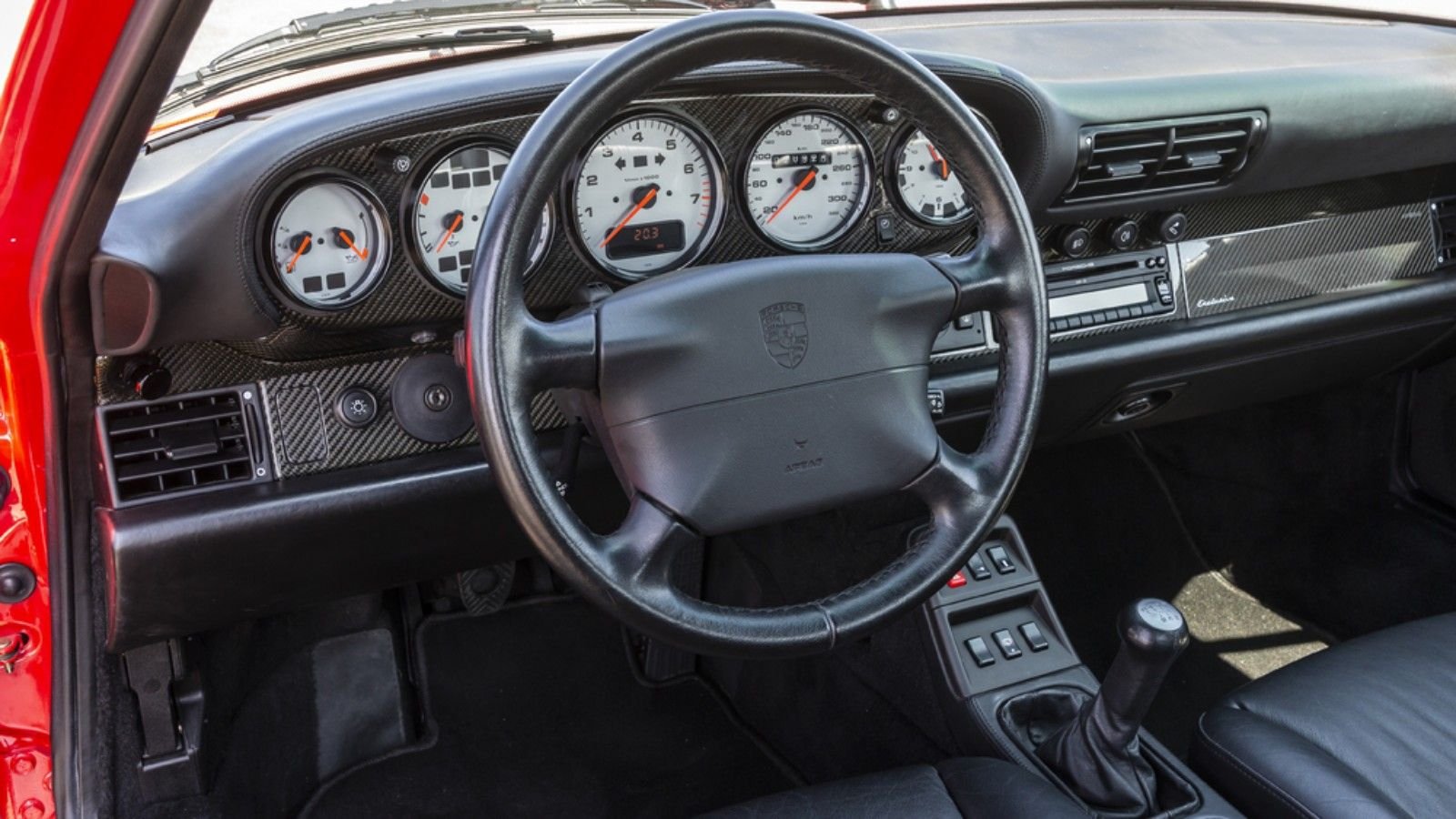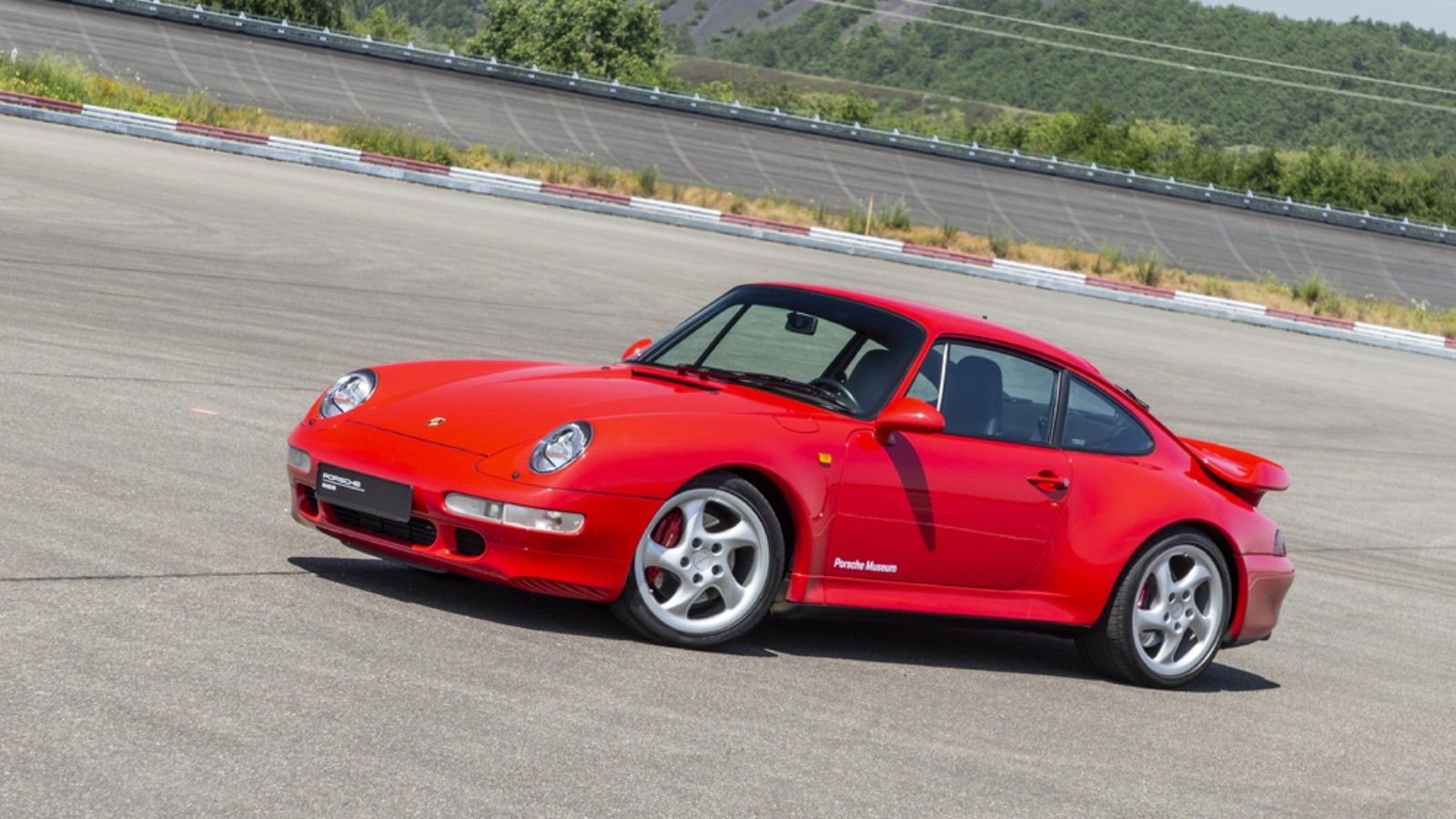Why the Porsche 993 Turbo is so Good
The 993 Turbo foreshadowed the future of Porsche's high-performance cars. With a range of technological innovations, it remains a 1990s icon.
















The mid 90s 911 icon
The instantly recognizable 911 profile, but this red car is especially iconic. It is a 993 Turbo, a car which combined many firsts and lasts for the 911 nameplate. These 993s were also a turning point for Porsche in the mid-1990s, reviving the brand's image and driving appeal among enthusiasts. In the contemporary collector's market, the 993 Turbo is very valuable - commanding strong prices.
The perfect blend of aero and retro
Many regard the 993 Turbo to have some of the best lines and proportions of any 911 in history. The 993 Turbo's front apron was made of plastic, which acted as a sacrificial barrier in case of a low-speed collision. Headlights were slightly more recessed than on the 964, aiding aerodynamics, with a sleeker front profile.
>>Join the conversation about the 993 Turbo here on Rennlist.
The first all-wheel drive 911 Turbo
Any 911 Turbo is a car of presence and theater. The 993 Turbo stayed true to this tradition with its larger whale tail wing. Most 993 Turbo cars had two ovoid exhaust tips and they all had one big difference from any 911 Turbo that had gone before: all-wheel-drive. The system which has been piloted by Porsche's 959 supercar was updated for duty in the 993 Turbo.
>>Join the conversation about the 993 Turbo here on Rennlist.
The first Turbo with red stoppers
Red brake calipers were another introduction on the 993 Turbo range. Porsche also engineered the bodywork of the car to feed additional air to the wheel wells - ensuring the 993 Turbo's brakes were always kept as cool as possible. Although the 993 Turbo was quite light by contemporary sports car standards, at only 3300lb, Porsche wisely decided to over-engineer the car's brakes.
>>Join the conversation about the 993 Turbo here on Rennlist.
No water in this one
The 993 Turbo was powered by a very poignant engine: combining tradition and modern technologies. Displacement was 3.6-liters, but unlike all previous 911 Turbo models, the 993's flat-six features TWO turbochargers.
>>Join the conversation about the 993 Turbo here on Rennlist.
A very fast late '90s German supercar
Originally sitting beneath that large fixed rear wing, the 3.6-liter flat-six boasts 408hp. Porsche gave customers the option of an upgrade kit in 1996, which hiked power to 430hp. By 1998, the final iteration of 993 Turbo models offered 450hp. With the benefit of all-wheel drive, 0-60mph was achievable in 4 seconds flat, and the six-speed manual transmission was geared for a top speed of 182mph.
>>Join the conversation about the 993 Turbo here on Rennlist.
A place for driving, not listening to streaming media
The 993 Turbo was Porsche's final cabin before digitization. Huge analog dials take pride of place, surrounded by carbon-fiber detailing. Note the steering wheel too, with its massive airbag packaging - indicating that this 993 Turbo was one of the first 911s to have airbags. Infotainment was limited to a CD front-loader.
>>Join the conversation about the 993 Turbo here on Rennlist.
Last of the great air-cooled 911s
In production from 1995-1998, the 993 Turbo was a seminal car for Porsche. It had elegant lines true to the original 911. But it also brought new innovations which are still evident in the 2020 911 Turbo: all-wheel drive and twin-turbocharging. What also makes it so desired by collectors is that this was the final air-cooled 911 Turbo. That makes it both historically significant and also gives the 993 car a very unique, raspy, sound signature.
>>Join the conversation about the 993 Turbo here on Rennlist.
For help with your maintenance or repair projects, please visit our how-to section in the forum.
